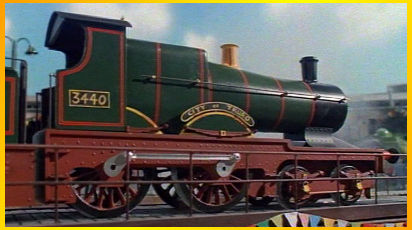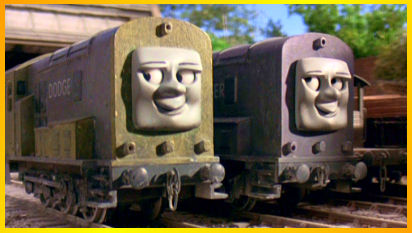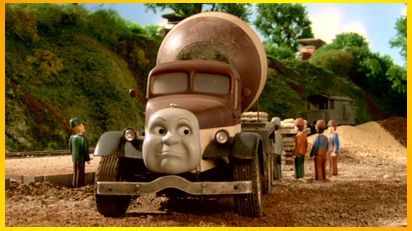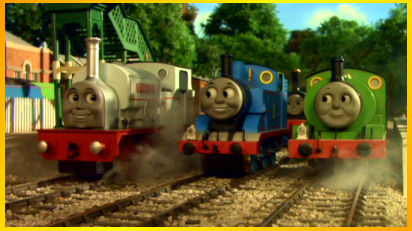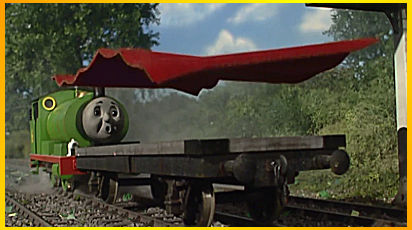
While David Mitton and Britt Allcroft are probably the best known personalities behind the scenes of Thomas – there are three men who deserve some greater appreciation for staying with him for the full run on the Model Unit from 1984 to 2008. Terry Permane and David Eves were technical geniuses in their own right – and Steve Asquith plugged his way to the top and took over from David Mitton from Series 8 onward to direct the model unit. Here, Steve shares his insights into twenty five years of quality film work from the Thomas and Friends set...
IMPORTANT DISCLAIMER
The answers given in the following interview solely reflect the opinions of Steve Asquith.
He in no way purports to represent HIT Entertainment / Mattel Creations.
Any opinions expressed in this interview are his alone and do not necessarily reflect the opinion of HIT Entertainment / Mattel Creations.
How did you become involved in the industry to begin with, and how did your involvement with Thomas come to be?
I joined Clearwater Films in the mid-70s as a model set designer working on commercials. In the early 80s I worked with David on the pilot for Thomas. When David and his partner Ken Turner went their separate ways, I stayed with David.
Were you ever aware of the Reverend Awdry’s books prior to working with Britt Allcroft?
Having never had a train set as a child, no, I was not aware of the books.
Which characters whether it be Awdry or TV Series born, would you count as being your favourites?
It has always been Awdry's Magnificent 7 (Thomas, Edward, Henry, Gordon, James, Percy and Toby).

It’s not widely known that David Eves actually came up with the idea for the Sodor Steamworks, which went on to be used in the CGI series – did you ever have any great creative influence over characters, loco prototypes and settings for the series?
From Series 6 onwards I had a good deal of influence on how the sets looked.
Were you ever involved with Clearwater’s other model animation series, TUGS at any point?
In a word, no. At the time, I was vainly trying to become a Commercials Director with a company called FilmFair.
David and Britt took a very keen hand in writing material from Series 3 onward to develop the show in their own image. Did you ever fancy writing something for the series yourself at any point, or did you want your visuals do the talking?
At David's request I wrote several storylines, some of which he used and a couple of ideas of mine were also used on later shows.
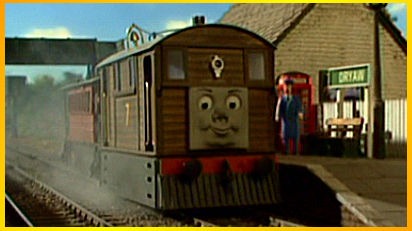
What influenced the idea to write original material from Series 3 onward?
It was felt that some of the original stories were repetative and too 'story-book' orientated.
David Mitton cleared up a long-standing rumour about one of the Railway Series stories about the Scottish twins – The Missing Coach, which got half-way through filming and was then dropped in favour of Thomas, Percy and the Coal. Throughout the 25 years you worked on the show, were there any other episodes that made it to production, but were later chopped?
To my knowledge or memory, the only episode that was completely reshot was the pilot episode, DOWN THE MINE.
Were there ever any stories that you felt would have made great episodes had they actually made it to production?
I have always felt that we filmed the best of the stories involving the famous 7.
Did Britt ever have her heart set on doing the third series earlier than 1991?
Britt always felt that there should never be too much over-exposure with Thomas and generally worked to an eighteen month gap between series.
There have been rumours flying around that things didn’t always go to plan in the model department prior to filming. The first rumour we’ve heard is that Flying Scotsman was due to appear in 1991, and while the tenders appeared peering out from the Harbour Station, there was likely no locomotive in front – the rumour goes that the model was dropped or damaged prior to filming, is there any truth in that?
The simple fact was that we could not afford to build the complete loco, the same applied to the City of Truro and to Bertram, and by the way economic decisions generally did not come from the studio floor!
Another rumour suggested that the City of Truro was binned around 1995.
It would not have been binned, rather the body would have been removed and repainted to look old and rusty and then used as dressing in the scrapyards.
Who was responsible for choosing the prototypes used for the new characters from Series 5 onward?
David Eves took the brief and sourced the appropriate loco, the decision of whether to go with it was either David Mitton's or later the Producer, Simon Spencer's.
Series 5 saw a lot of one shot characters used – were Thumper, Derek, Bertrum and Old Slowcoach originally intended for greater things prior to the changes made in Series 6?
As the series became more and more successful, the demand for more characters/toys increased, making it difficult if not impossible to keep them in forthcoming shows.
A lot of the Canadian crew from Thomas and the Magic Railroad model unit have shared their memories of working on the Movie with you guys in 1999, do you have any recollections of the shoot you could share?
Ah, TORONTO! Wonderful city, great people, I will pass on the rest, suffice to say it was not my finest hour. Two great locals stand out however: Franc Madden - may he live forever! And Gordon Bray, who has sadly died.
Were the Splatter and Dodge models altered following Magic Railroad to become the new ‘Arry and Bert models?
No, this was another case of economics. I think we simply took casts of the Splatter and Dodge characters to make the new ‘Arry and Bert models.
The Jack and the Pack episodes were your first official stint directing the series – for you, how did it differ from the ‘proper’ Thomas set?
For me it was like being given the keys to Toys R Us. I had a better camera and a better camera rig, the model shop bent over backwards to supply the floor, and other members of the crew were in a sense moving up the ladder. So I hope I speak for all when I say that it was a very enjoyable experience. This does not mean to say that on a rare occasion I might have behaved like a total prat! But directors are supposed to do things like that aren't they? The major technical difficulty was the fact that the Jack characters were twice the size of the Thomas characters but our sets were not!
Were you pleased at the prospect of taking over from David Mitton for the eighth series onward?
Given that the choice was either myself or a Director brought in by Hit Entertainment, yes, I was over the moon.
Series 8 onward had a more condensed character-base than previous series – would you have preferred to have worked with more characters and models?
No, as I stated earlier the cast of characters was simply too unwieldy.
Did it ever strike you as being a little unusual that from Series 8 onward foodstuffs were being carried in open wagons?
It struck me and a few others a lot but our protests fell on deaf ears.
You shot two Feature Length specials with the series. Did these differ much from the normal day to day shooting of a normal series?
Like a feature film, Thomas is shot out of sequence. So the specials, as they were called, were really no different in terms of filming to the series.
The Great Discovery featured some of the most daring stunts of the series, particularly in the mine shaft scenes and Thomas flying through the air – how did you guys manage to do these?
Basically we used a lightweight model of Thomas on wires for the 'in air' shots, and hidden rigs under water for the flooded mine sequences.
Compared with the first 11 series of the show – how did Series 12 differ in terms of shooting? Given the fact that the engines often wore targets for the benefit of the CGI animators, and the human beings were no longer figurines – was it more difficult for you in terms of getting your timing right?
The only two problems we had to be aware of was to allow enough time for the characters to move, or to carry out the task they were supposed to on screen. And secondly to ensure that no steam or smoke drifted across the space where the character was standing.
How did you feel when you were informed that the model series was coming to an end in favour of CGI?
Not great, but if you have worked as a Freelancer for most of your working life as I have, then these things are to be expected.
What have you been working on since the model shooting ended, and what other projects have you been involved with before, after and during your time with Thomas?
While David Mitton was shooting TUGS, I was working at FilmFair as a Commercials Director on stop-frame commercials. I also did some consultancy work on a Childrens TV Series called Construction Site (Produced by the Jim Henson Company). My last claim to fame was working as the production manager on a series called Dream Street. In 2008 I enrolled for a Masters in Printmaking and am now trying to make a living as a Printmaker!
Out of the episodes and scenes you shot for Thomas over the years, what would you say was the most challenging or enjoyable? And which would you credit as being your favourites?
I was very pleased with The Great Discovery and the episode, Percy and the Magic Carpet, although having told the Producer that the only way to make the carpet work was to shoot it as a CGI element, and then have the model shop come up trumps with a physical model required the digestion of an awful lot of humble pie on my part!
